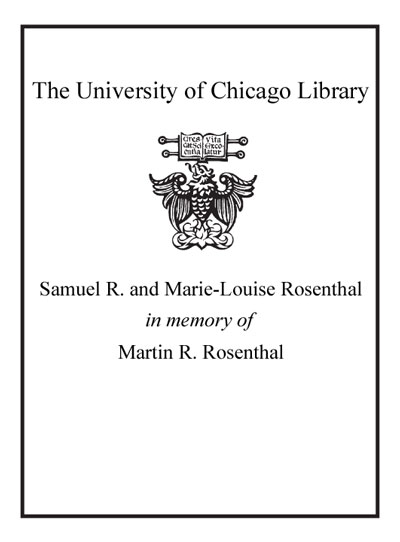The Global Partnership against WMD : success and shortcomings of G8 threat reduction since 9/11 /
Saved in:
| Author / Creator: | Heyes, Alan. |
|---|---|
| Imprint: | Abingdon : Routledge, 2011. |
| Description: | iii, 140 p. ; 24 cm. |
| Language: | English |
| Series: | Whitehall paper ; 76 Whitehall paper series ; 76. |
| Subject: | |
| Format: | Print Book |
| URL for this record: | http://pi.lib.uchicago.edu/1001/cat/bib/8961737 |
MARC
| LEADER | 00000cam a2200000 a 4500 | ||
|---|---|---|---|
| 001 | 8961737 | ||
| 003 | ICU | ||
| 005 | 20130201101400.0 | ||
| 008 | 111115s2011 enka b 000 0 eng c | ||
| 020 | |a 9780415518628 | ||
| 020 | |a 0415518628 | ||
| 035 | |a (OCoLC)760996367 |z (OCoLC)758394316 | ||
| 040 | |a AWC |c AWC |d AWC |d BTCTA |d UKMGB |d AFQ |d CUD |d CDX |d YDXCP | ||
| 042 | |a pcc | ||
| 082 | 0 | 4 | |a 327.174 |2 23 |
| 090 | |a JZ5645 |b .H49 2011 | ||
| 100 | 1 | |a Heyes, Alan. |0 http://id.loc.gov/authorities/names/no2011173537 |1 http://viaf.org/viaf/195752669 | |
| 245 | 1 | 4 | |a The Global Partnership against WMD : |b success and shortcomings of G8 threat reduction since 9/11 / |c Alan Heyes, Wyn Q. Bowen and Hugh Chalmers. |
| 246 | 3 | |a Global Partnership against weapons of mass destruction : |b success and shortcomings of the Group of Eight threat reduction since September 11 | |
| 260 | |a Abingdon : |b Routledge, |c 2011. | ||
| 300 | |a iii, 140 p. ; |c 24 cm. | ||
| 336 | |a text |b txt |2 rdacontent |0 http://id.loc.gov/vocabulary/contentTypes/txt | ||
| 337 | |a unmediated |b n |2 rdamedia |0 http://id.loc.gov/vocabulary/mediaTypes/n | ||
| 338 | |a volume |b nc |2 rdacarrier |0 http://id.loc.gov/vocabulary/carriers/nc | ||
| 490 | 1 | |a Whitehall paper ; |v 76 | |
| 504 | |a Includes bibliographical references. | ||
| 505 | 0 | |a Introduction -- The G8, non-proliferation and the global partnership -- Funding, prioritisation, results and evaluation -- Operational delivery and spin-off benefits -- The future of multilateral threat reduction -- Annex A: Global partnership documents, Kananaskis G8 Summit, 27 June 2002 -- Annex B: Research interviews -- Annex C: Case studies -- Annex D: EU instrument for stability -- Annex E: US threat reduction programmes -- Annex F: Non-G8 GP country commitments and expenditure. | |
| 520 | |a The 9/11 terrorist attacks prompted a new urgency in efforts to deal with chemical, biological, radiological and nuclear proliferation. The potential acquisition and use by terrorist groups of such weaponry was suddenly a much increased threat. The G8 Global Partnership against the Spread of Weapons and Materials of Mass Destruction subsequently encouraged some twenty-two countries and the European Union to pledge up to $20 billion to address this challenge. The creation of the Global Partnership was the first time so many countries agreed to collaborate on a range of non-proliferation, security and nuclear safety programmes, as well as commit such an amount of resources to them. Based on extensive primary research, this Whitehall Paper assesses the success and shortcomings to date of the Global Partnership, and suggests how the mechanism can be bolstered and taken forward. | ||
| 610 | 2 | 0 | |a G8 Global Partnership Against the Spread of Weapons and Materials of Mass Destruction. |0 http://id.loc.gov/authorities/names/nb2008009569 |
| 650 | 0 | |a Arms control |x International cooperation. | |
| 650 | 0 | |a Weapons of mass destruction. |0 http://id.loc.gov/authorities/subjects/sh96004190 | |
| 610 | 2 | 7 | |a G8 Global Partnership Against the Spread of Weapons and Materials of Mass Destruction. |2 fast |0 http://id.worldcat.org/fast/fst01782714 |0 http://id.worldcat.org/fast/1782714 |
| 650 | 7 | |a Arms control |x International cooperation. |2 fast |0 http://id.worldcat.org/fast/fst00814915 | |
| 650 | 7 | |a Weapons of mass destruction. |2 fast |0 http://id.worldcat.org/fast/fst01173041 | |
| 700 | 1 | |a Bowen, Wyn Q. |0 http://id.loc.gov/authorities/names/n95086504 |1 http://viaf.org/viaf/32168588 | |
| 700 | 1 | |a Chalmers, Hugh. |0 http://id.loc.gov/authorities/names/no2011173539 |1 http://viaf.org/viaf/214017675 | |
| 710 | 2 | |a Royal United Services Institute for Defence and Security Studies. |0 http://id.loc.gov/authorities/names/nr2004003718 |1 http://viaf.org/viaf/156922827 | |
| 830 | 0 | |a Whitehall paper series ; |v 76. | |
| 903 | |a HeVa | ||
| 929 | |a cat | ||
| 999 | f | f | |i 15257ef4-2071-51b6-b514-da6223bde338 |s 8e9f8a36-9c41-5039-a243-834cca4b3022 |
| 928 | |t Library of Congress classification |a JZ5645 .H49 2011 |l JRL |c JRL-Gen |i 1327677 | ||
| 927 | |t Library of Congress classification |a JZ5645 .H49 2011 |l JRL |c JRL-Gen |e MARO |b 107539085 |i 9126051 | ||

